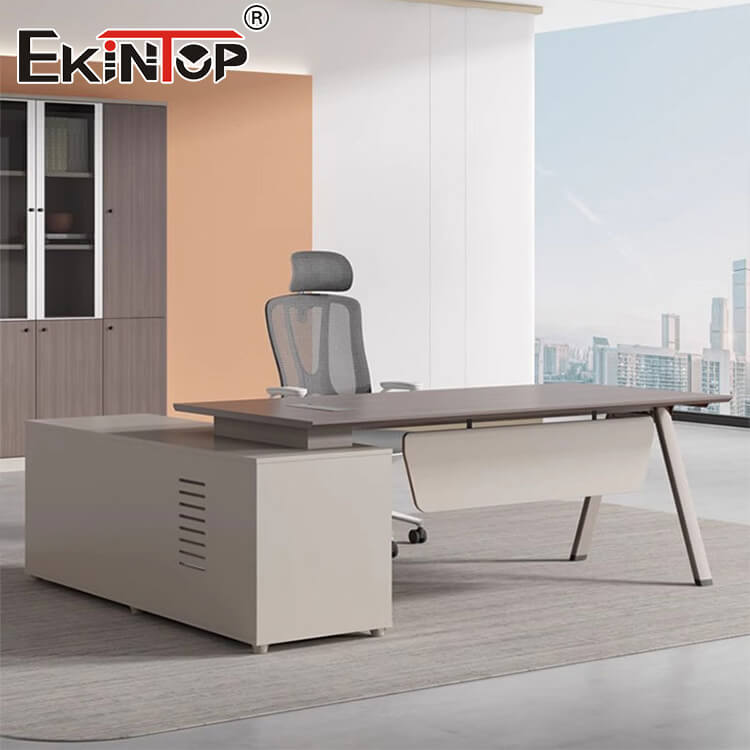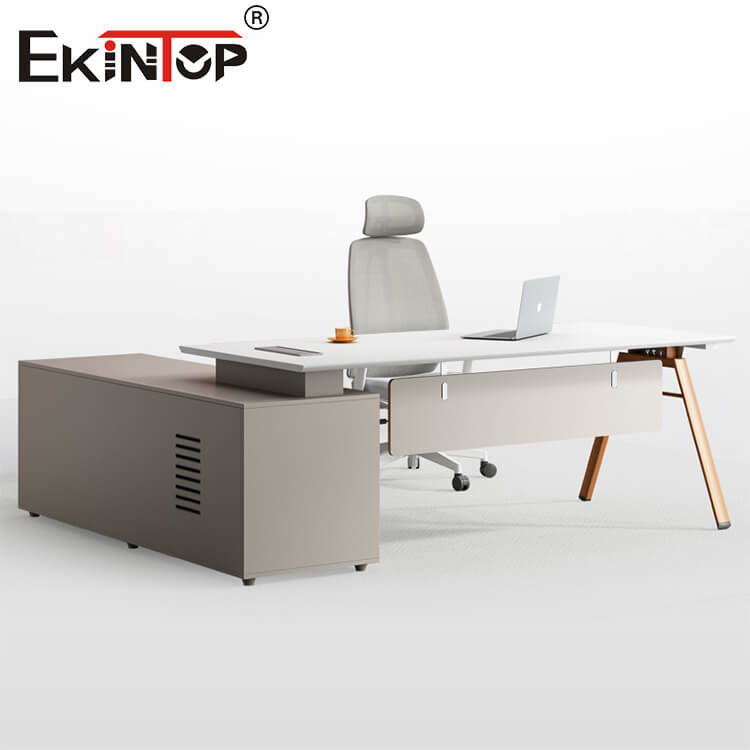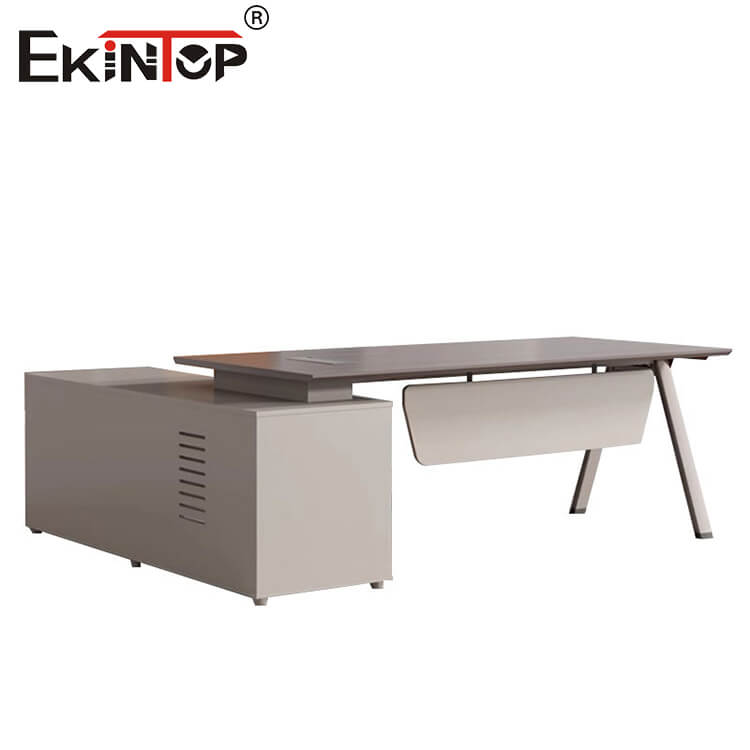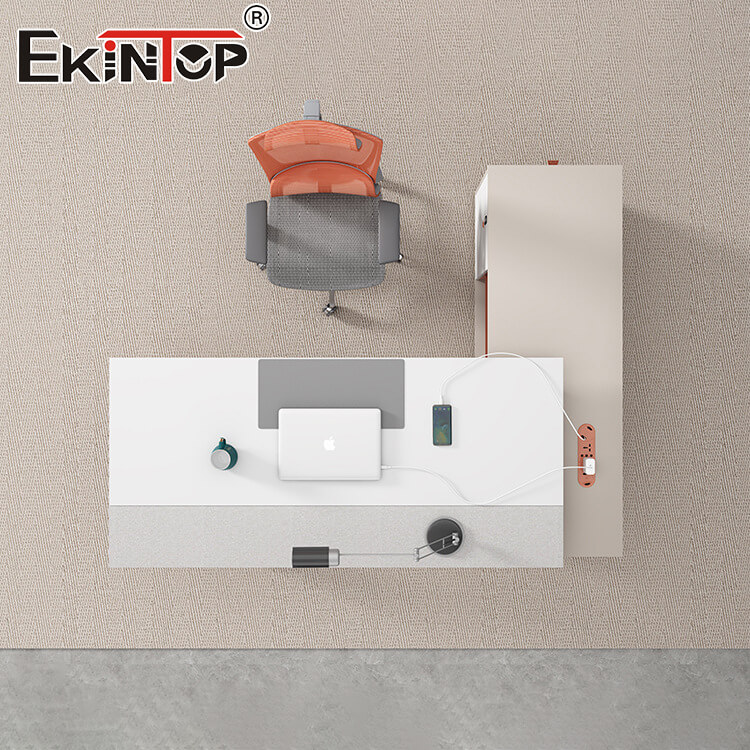
October 15,2025
admin
On the outskirts of the city, there is a busy office table factory, a magical place where various raw materials are transformed into practical and aesthetically pleasing office tables. Each office table produced here embodies exquisite craftsmanship and the painstaking efforts of countless workers, witnessing a wonderful journey from scratch.
The first step in the production of office tables is the meticulous selection of raw materials. For desktop materials, wood is a classic choice. The factory procures high-quality wood, such as oak and walnut, from reliable suppliers. These woods have a hard texture and beautiful grains, bringing a natural texture and an elegant appearance to the office tables. During the procurement process, quality inspectors will strictly examine the moisture content, smoothness of the grain, and the presence of any flaws in the wood. Only the wood that meets high standards can enter the production process. Besides wood, metal materials are also indispensable. The metals used for table legs and supporting structures are usually high-strength steel or aluminum alloy. The steel has undergone special treatment to possess good compressive resistance and corrosion resistance, ensuring the stability of the office table during long-term use. The aluminum alloy, with its lightweight and modern appearance, provides an ideal choice for the design of some stylish office tables. In addition, the factory will also select high-quality hardware accessories, such as drawer rails and handles. These seemingly small components play a crucial role in the user experience of the office table, as they need to have smooth operation performance and durability.

Once the raw materials are ready, they will be sent to the cutting workshop. Here, advanced cutting equipment will precisely cut the wood and metal according to the design specifications. For wood, large sawing machines will cut the logs into suitable boards and strips according to the size requirements of the desktop and table legs. During the cutting process, workers need to closely monitor the cutting accuracy to ensure that the size error of each piece of wood is controlled within a very small range, which is the key to ensuring the smooth progress of subsequent assembly. Meanwhile, to meet the needs of different design styles, some woods will also undergo special cutting techniques, such as bevel cutting or curved cutting, to create unique shapes. The cutting of metal materials requires more professional equipment, such as laser cutting machines or plasma cutting machines. These devices can cut out complex shapes with extremely high precision to meet the design requirements of metal components such as table legs. After cutting, the metal components will also undergo grinding treatment to remove burrs and rough surfaces on the edges, making them smooth and flat to avoid scratching users during use.

The components that have been cut and processed will be sent to the assembly workshop, where the office tables gradually take shape. Experienced assembly workers will combine the table legs, desktops, and other accessories together according to the detailed assembly drawings. First, they will fix the table legs to the desktop, using high-quality screws and glue to ensure a firm connection. During this process, workers will use professional tools to ensure that the tightening force of the screws is uniform, preventing the desktop from deforming due to uneven force. For office tables with drawers or storage functions, assembling the drawers is a meticulous step. The side panels, bottom panels, and back panels of the drawers need to be precisely spliced together, and then smooth rails are installed to ensure that the drawers can be easily pulled out and pushed in, and when closed, they can fit perfectly with the desktop without any gaps or looseness. During the assembly process, quality inspectors will conduct random inspections on each assembly step. Once any problems are detected, such as loose component installation or size deviation, they will promptly ask the workers to make adjustments to ensure the quality of each office table.

After the assembly is completed, the office tables still need to undergo surface treatment, which can not only enhance their aesthetics but also improve their durability. For wooden desktops, common surface treatment methods include spraying paint, applying lacquer, and pasting veneer. Spraying paint can provide a rich color selection for the desktop and form a hard protective film to prevent the wood from getting damp, scratched, and faded. Applying lacquer focuses more on presenting the natural grains of the wood. Through special lacquer treatment, the grains become clearer and more beautiful. Pasting veneer is an economical and aesthetic way. It can create the appearance effect of high-grade wood for the desktop at a lower cost. When performing surface treatment, workers will operate in special spraying paint rooms or lacquer application workshops to ensure a clean environment and appropriate temperature and humidity for the best treatment results. For the metal parts, electroplating or powder spraying treatment is usually carried out. Electroplating can add luster to the metal surface and improve its corrosion resistance; powder spraying can achieve rich color effects and the coating is more uniform and firm.

Before the production of office tables is completed, the final quality inspection step is of crucial importance. Each office table will undergo a comprehensive inspection, including appearance inspection, structural inspection, and functional inspection. In terms of appearance, inspectors will carefully check whether there are scratches on the desktop, whether the color is uniform, whether the wood grains are natural and smooth, and whether there are signs of paint peeling or rusting on the metal parts. The structural inspection mainly focuses on the overall stability of the office table, checking whether the table legs are firm and whether there are any loose phenomena at the connection points. The functional inspection includes whether the drawers can be pulled and pushed smoothly and whether the hardware accessories work normally. Only the office tables that have passed the strict quality inspection will be labeled as qualified, packaged, and then transported to the market, becoming practical and aesthetically pleasing furniture in the office, providing comfortable and convenient support for people's work. From raw materials to finished products, each step in the office table factory is like a carefully choreographed dance, jointly presenting a perfect combination of quality and craftsmanship.
Choose our company, Ekintop Furniture, and we will provide you with the best products and service.

